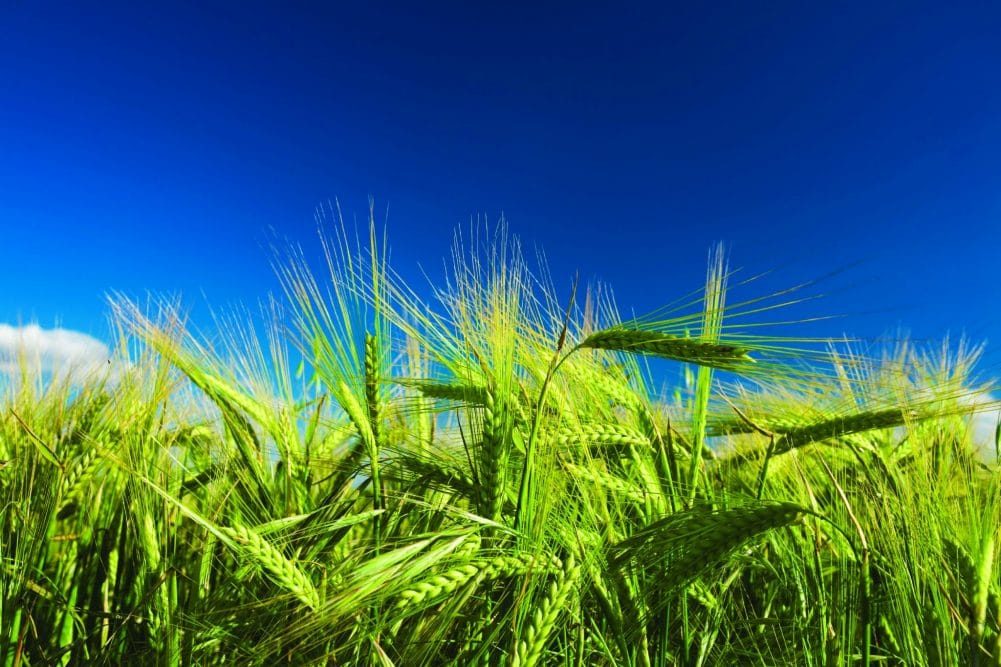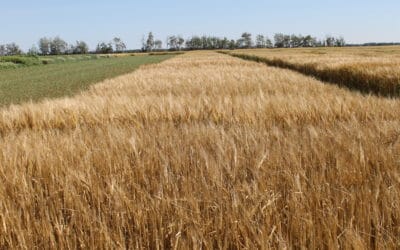Although producers in the Canadian Prairies have evolved beyond continuous wheat or wheat-fallow cropping systems, simple wheat-canola rotations are still common. This lack of diversity is risky, as it can result in herbicide resistance, increased disease and insectpressure and soil degradation. Understandably though, economics often trump agronomics. Industry experts offer recommendations to improve rotations while still allowing growers to make money.
Most producers know what a good rotation is, but for financial reasons, most do not follow a good rotation, says Harry Brook, a crop specialist with Alberta Agriculture and Forestry.
Work done by Murray Hartman, a retired oilseed specialist with Alberta Agriculture and Forestry, revealed a large percentage of Alberta farmers, particularly in north-central Alberta and the Peace region, followed a rotation that included canola and just one other crop, mostly wheat or barley.
“The reason being, of course, was financial,” says Brook. “When you’ve got canola over $10.50 to $11 a bushel, that’s really pushed the rotation and squeezed it.”
However, since Canada has been faced with trade issues, canola prices have dropped, making these tight rotations less defendable.
Despite the trade issues, canola acreage in 2019 was still high, says Brook. “The thing about Roundup Ready or Liberty Link canola is they’re easy. People like easy.”
And yet, last year, Brook spoke with Alberta producers who said their biggest money maker was feed barley. A 100-bushel feed barley crop nets far more than a 40-bushel canola crop because the cost of canola is so much higher than any other crop.
“Just because something’s worked for the past 10 years, does not necessarily mean it’s going to continue to work, especially with trade issues,” says Brook.
Today, markets are unpredictable at best. Saudi Arabia’s purchases of barley have stopped. India has reduced purchases of lentilsand peas. China has stopped purchasing canola from Canada, and Italy has been using country of origin labelling to reduce purchases of Canadian durum wheat. The trade issues seem endless when examined closely, and this has an obvious effect on rotation.
The benefits of lengthier rotations are often underemphasized, says Brook.
Longer rotations generally interrupt insect, disease and weed life cycles that, in turn, allow for a wider variety of crop protection tools to be used. More complex crop rotations definitely assist in managing the build-up of pesticide resistance because, typically, different groups of crop protection products are used on different crops.
“This is part of the reason why we have a problem with clubroot in Alberta,” says Brook. “We grow canola so frequently that it’s allowed for a rapid increase in the number of spores produced in a field. Before you know it, you have a field where canola is no longer profitable because the clubroot is removing 50 per cent or greater of the yield potential.”
If it’s not clubroot, it’s blackleg. And while resistance genetics has improved the situation, over time they’ve begun to break down as well.
“Common sense would say don’t keep growing the same crop because you’re going to increase some pests that will eventually make it no longer profitable to grow that crop,” says Brook.
There are other paths to profitability, Brook points out. Last year, barley was the big crop. This year it could be oats, he says.
“It’s not a cookie-cutter system. You have to know your land, what it can produce, and be aware of those markets that are available to you and take advantage of them,” says Brook.
“It requires a little effort into looking into alternatives and finding where you can find the niche to make extra profit.”
Flax has potential, but when farmers get into small acreage crops, they really have to look into marketing. Solidifying prices and finalizing contracts ahead of time is always recommended.
Hemp is another interesting crop, although the economics are an important factor to finalize.
“You don’t want to lose your shirt with a new crop just because it’s new,” says Brook. “There has to be a home for it, and you have to get some money.”
Excitement about new crops is not a recent phenomenon. It’s been going on as long as farming has existed. Small acreage crops, like mustard, come and go. In some years, growers get paid well for those crops. In others, they don’t. Jerusalem artichoke, evening primrose, flax, quinoa and borage are all potential alternative crops that have come and gone. However, there are established small markets for mustard and hemp.
Hay production offers another alternative, says Brook. Hay works really well in a rotation to reduce disease and pest pressures, but growers usually have to be situated in an area where there are a lot of cattle or livestock in order to make it work.
Brook has a few last words of advice for those who want to experiment.
“If you’re going to try something new, try it on a small scale first to make sure it works, that it’s got profitability, and use it as a learning tool to make sure you understand the agronomics,” he says.
But don’t forget the economics. “Economics cannot be ignored. In fact, economics take front and centre,” says Brook.
Two Sides to the Rotation Story
According to Agriculture and Agri-Food Canada researcher Brian Beres, there are two sides to the rotation story. One takes the short-term economical viewpoint, and the other looks at the long-term vision that incorporates what the scientific community says in terms of crop and soil response to varying degrees of rotational diversity.
In 2018, Beres completed a study that looked at the impact of cropping diversity on the response of triticale. Beres and his team examined the effects of rotational diversity on cereals in cropping sequences with canola, field pea or an intercrop of triticale and field pea. The results were intriguing in terms of soil health, yield and stability.
Results showed when triticale was grown in highly diverse rotational systems, it produced superior grain yield and biomass. Triticale benefitted from the inclusion of both field pea and canola, but for different reasons. Field peas increased soil available nitrogen, improved soil structure and properties, and increased soil organic matter.
Although the researchers don’t know why for certain, their study shows that when canola is removed from the rotation, triticale yields drag, says Beres. Adding canola to the rotation and extending the cycle from two to three years helped improve triticale yield gain. Beres theorizes the benefit may relate to the fact that canola is not a host for arbuscular mycorrhizal fungi, and the non-host break benefitted the succeeding cereal crop.
In terms of yield, canola did not respond to increased rotational diversity. Beres says the two-year rotation with triticale looked every bit as good as the three-year rotation.
“From a yield perspective, it was exactly the same. You can understand why producers would commit to a shorter rotation with canola,” says Beres.
“Not only in the short term was it giving them that kind of additional economic returns, there was really no perceived downside to it,” Beres adds. “The only thing we noticed from our dataset was as soon as you pull canola out, you get a yield drag on the wheat, which underscores the importance of canola to cereal crop phases.”
Although tighter canola rotations might be more profitable in the short term, in the long term, disease, insect and weed pressure, as well as soil health issues, are sure to increase overall costs.
Similar studies conducted by Neil Harker at AAFC have shown rotational diversity, as a long-term strategy for canola, is important. Yields increase as blackleg and root maggot damage is reduced. Not only that, short-term benefits might be short-lived, says Beres, pointing out that a seven-year study might not be enough to really see the effect of those tight rotations.
In high-production environments, where growers have tightened canola rotations, Beres has seen soil health issues and clubroot incidents escalate. Growers, he says, are changing their thinking on tight rotations as a result.
It’s not just soil health and disease pressure that’s driving change. In the near future, growers will likely want to change rotations in order to adapt to changing climate conditions. Beres suggests winter wheat and other crops with a winter growth habit could play a more important role in rotations in the future.
“If there’s a crop that’s going to adapt better or be more resilient as we begin to adapt to climate change, winter-type crops like winter wheat are poised to benefit from it,” he says.
Another option may be ultra-early planted spring wheat. In addition, Beres and his team are currently working on a project to determine which crops work best with winter wheat, and how a winter wheat phase compares to respective spring wheat class phases in terms of production, economic returns, and soil carbon sequestration.
The study consists of a range of rotational schemes comparing three-year rotations of durum, CWRS, CNHR, CPS and CWGP with canola and peas to determine what stands out in terms of yield, economic returns and agronomics.
In this study, however, data shows that triticale responded positively to increased rotational diversity. It also showed greater stability when field pea was included, and increased rotational diversity led to improved profitability and sustainability overall.





